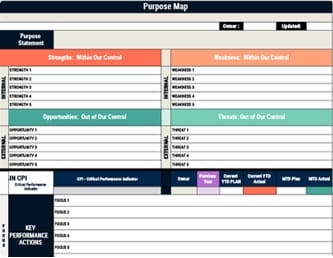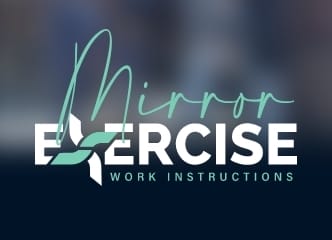High standards without blame, control without micromanagement—extreme ownership asks you to hold outcomes, not just tasks. You set a clear mission, simplify communication, and push authority to the edges so people decide fast and align with priorities. You coach instead of rescue, measure what matters, and run tight debriefs that turn mistakes into playbooks. You reward ownership behaviors, not heroics. If you want accountability at every level, start here, then confront the hardest shift next.
Key Takeaways
- Define a clear mission, success criteria, and “why” so teams align decisions to organizational goals.
- Push decision rights to small teams with guardrails; coach instead of micromanaging.
- Set explicit expectations in writing; confirm understanding and follow up on commitments.
- Prioritize the highest-impact task, assign owners, time-box work, and checkpoint progress.
- Normalize admitting mistakes; run after-action reviews to capture lessons and prevent recurrence.
Embrace Extreme Ownership
Although it may feel counterintuitive at first, embracing Extreme Ownership means you accept full responsibility for outcomes across your team, and you model the accountability you expect from others. You stop blaming external factors, examine your decisions, and address gaps quickly, which signals to others that ownership is nonnegotiable.
When you demonstrate Extreme Ownership, you create a culture where people feel safe to admit mistakes, surface risks early, and propose solutions without waiting.
Shift from micromanaging to coaching, set clear standards, and provide resources, then hold yourself to the same metrics. Invite feedback, document lessons learned, and convert them into practical adjustments that prevent recurrence.
Coach, don’t micromanage: set standards, resource your team, invite feedback, and turn lessons into lasting improvements.
As accountability spreads, team dynamics improve, trust grows, and proactive problem-solving becomes routine, driving innovation, performance gains, and less blame-shifting.
Clarify the Mission and Simplify Communication
Start by defining a concise mission statement that explains what success looks like, why it matters to the end user, and how each team contributes. Then strip your communication of jargon so everyone can repeat it in their own words.
When you anchor decisions to a clear mission, people align actions with organizational goals, reduce drift, and prioritize work that moves the needle.
Use simple, direct communication to state roles, responsibilities, timelines, and expected outcomes, so no one guesses at intent or scope.
Give context for why the work matters, because understanding the user problem drives smarter trade-offs and innovation that increases relevance.
Reinforce accountability by restating expectations in writing, confirming understanding in meetings, and checking for clarity, which research links to higher engagement and performance.
Decentralize Command to Empower Decision-Making
With a clear mission and simple communication in place, put authority where the work happens by decentralizing command so small teams can make real‑time calls without waiting for approvals.
Use decentralized command to empower decision-making at the edge, where facts are freshest and speed matters, because proximity to action increases responsiveness and adaptability when conditions shift.
Assign decision rights to small groups, define guardrails, and clarify “The Why,” so actions align with organizational goals and engagement rises.
As teams act without micromanagement, creativity and innovation grow, and research shows project delivery can improve by up to 30%.
Shift your role toward coaching, context, and obstacle removal, which builds a culture of accountability.
Review outcomes frequently, reinforce standards, and adjust authorities as competence matures.
Prioritize and Execute Under Pressure
When pressure spikes and variables multiply, you steady the team by identifying the single most critical task, rallying resources to it, and blocking out distractions until it’s done.
You prioritize with discipline: define the objective, list options, select the highest-impact action, and communicate it in clear, brief terms so everyone knows what success looks like.
Then you execute, assigning owners, time boxes, and checkpoints, keeping the path visible and measurable.
As the first task closes, you shift to the next priority, preserving momentum and clarity, while resisting the urge to multitask.
You stay accountable by reporting status, acknowledging tradeoffs, and adjusting resources when new information appears.
As a leader, you protect focus, remove blockers, and reinforce that sequential progress beats scattered effort under pressure.
Train and Develop for Accountability
You kept the team focused under pressure by sequencing priorities; now build the capability that makes that focus repeatable by training for accountability.
Design scenario-based drills that mirror real decisions, require clear roles, and force timely action, then debrief to connect choices to outcomes and standards.
Mix premium and free online leadership courses so everyone can train continuously, using expert modules to deepen accountability practices without budget strain.
Set explicit performance expectations before each exercise, link them to team goals, and measure results with simple scorecards.
Use low-cost methods—tabletop simulations, role plays, and after-action reviews—to sharpen judgment and proactive problem-solving.
Model accountability in every session: state your intent, own your mistakes, and provide specific, constructive feedback, so people feel empowered to take responsibility and improve.
Recognize and Reward Ownership Behaviors
Although training builds capability, sustained accountability takes hold only when you consistently recognize and reward ownership behaviors that drive results.
You set the standard by naming the behavior, linking it to outcomes, and showing why it matters. Use formal recognition—awards, public commendations, and visible spotlights—to reinforce that accountability is a core value, not a slogan.
Implement peer recognition so teammates can surface accountable actions in real time, which strengthens collaboration and spreads best practices.
Tie recognition to tangible rewards when appropriate—bonuses, stretch assignments, and promotions—so people who model ownership behaviors see a clear path to growth.
Communicate the measurable impact frequently, referencing wins and metrics to show how accountable actions lifted performance, which research shows can boost engagement and results by up to 70%.
Build a Debriefing Culture for Continuous Improvement
Recognition sets expectations; debriefing cements them into daily practice by making learning visible and repeatable.
Build a debriefing culture by scheduling brief, structured after-action reviews after every project or milestone, using a simple agenda: what was supposed to happen, what actually happened, why, and how to improve next time.
Schedule brief after-action reviews: intent, outcome, causes, and next steps for continuous improvement.
Invite all roles to speak, set psychological safety ground rules, and focus on facts over blame to strengthen accountability.
Document outcomes in a living playbook, capturing best practices, risks, and fixes so future teams can apply them quickly.
Track friction points to closure, assign owners, and revisit progress in the next session, which reinforces continuous improvement and shared ownership.
Make attendance and contribution expected, align insights to mission and goals, and measure performance gains to sustain momentum.
Frequently Asked Questions
What Are the 5 C’s of Accountability?
The 5 C’s of accountability are Clarity, Commitment, Communication, Consistency, and Consequences.
You define roles and expectations with clarity, then secure commitment to shared goals so people own outcomes.
You communicate progress and obstacles openly, enabling timely feedback.
You apply standards with consistency, avoiding exceptions that erode trust.
Finally, you enforce consequences, recognizing strong performance and addressing gaps, which reinforces responsibility and drives continuous improvement across individuals and teams.
What Are the 4 P’s of Accountability?
The 4 P’s of accountability are Purpose, Prioritization, Process, and People.
You start by clarifying the mission and desired outcomes, then rank critical tasks so effort concentrates on what moves results.
You establish repeatable mechanisms—feedback loops, after-action reviews, and personal reflection—to track commitments and learn fast.
Finally, you empower individuals to own deliverables, collaborate transparently, and escalate risks early, ensuring alignment, momentum, and measurable performance across the team.
What Are the 3 C’s of Accountability?
You steer accountability with the 3 C’s: Clarity, Commitment, and Communication.
Think of clarity as switching on the stadium lights—you define roles, standards, and outcomes so no one guesses. You show commitment by owning responsibilities, honoring deadlines, and aligning choices with shared goals, even when trade-offs sting.
You practice communication through regular updates, candid feedback, and open problem-solving, which prevents drift, surfaces risks early, and reinforces mutual responsibility across the team.
What Are the 4 Rules for Jocko Will?
They’re:
1) Own Everything—you accept full responsibility for outcomes, avoiding blame and excuses while fixing issues.
2) There Are No Bad Teams, Only Bad Leaders—you assess your guidance, standards, and support to elevate performance.
3) Leadership Is a Decision—you choose to lead proactively, set priorities, and act decisively.
4) Simplify—you clarify goals, streamline plans, and communicate plainly so people understand tasks, reduce confusion, and execute reliably under pressure.
Conclusion
As you adopt extreme ownership, you align teams around a clear mission, simplify communication, and decentralize decisions so people act fast and correctly, even under pressure. You prioritize and execute, run disciplined debriefs, and train for accountability, reinforcing standards through targeted recognition. Treat mistakes as data, not drama, and document lessons like a black-box recorder, ensuring resilience and adaptability. When you coach instead of micromanage, you create a system that scales, sustains performance, and advances shared goals without constant oversight.



